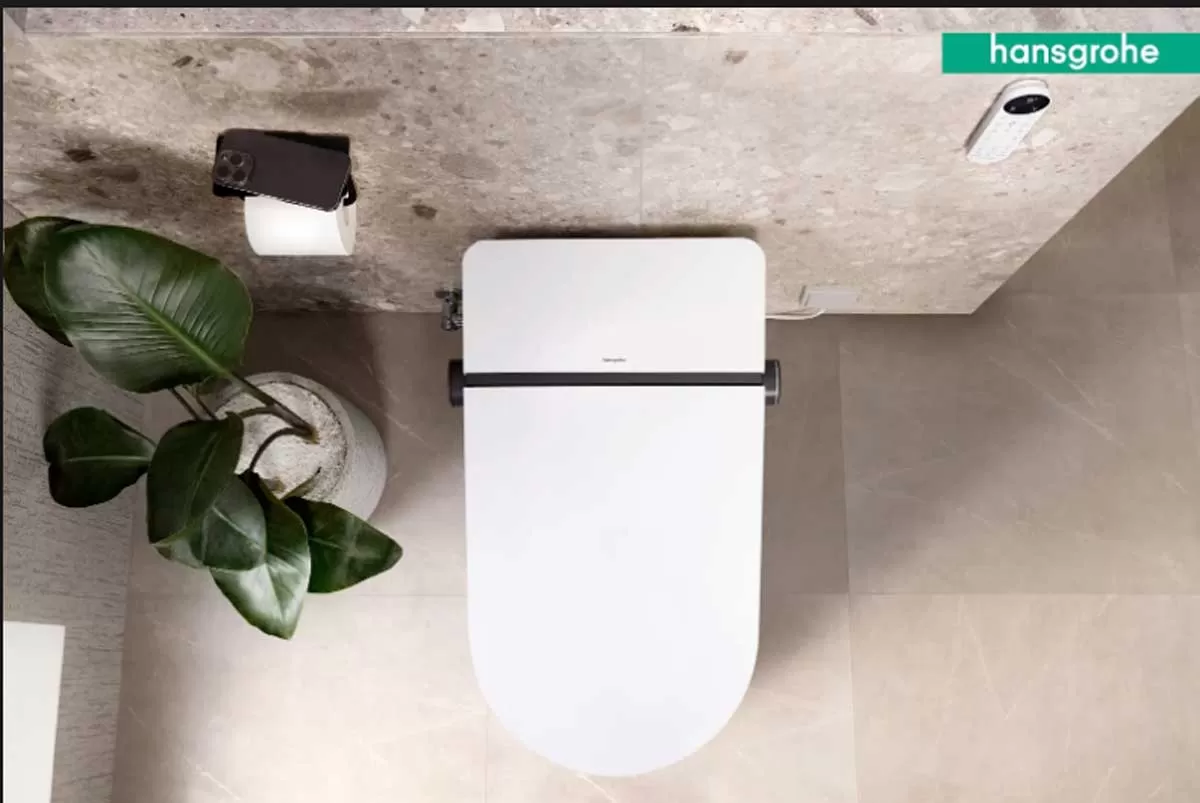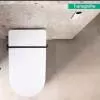SUNNY SURLAKER elaborates upon the mechanisms of corrosion and construction chemical solutions to mitigate corrosion in RCC structures.
Corrosion is a key contributor to the deteriorating infrastructure of the country. Experts estimate that the total cost of corrosion in India today is around $70 billion (roughly Rs 4.5 lakh crore) a year, or roughly 3-4 per cent of our GDP. The cost, growing each year, is a sum total of corrosion across a variety of fields such as infrastructure, utilities, industry, etc. Based on international statistics, even if corrosion in the construction industry is a small percentage of this, say 3 per cent, figuratively the cost of corrosion in the industry would still be Rs 13,500 crore. This also indicates that structures would be coming up for rehabilitation much earlier than expected. Although the scope of corrosion in construction is vast, we shall concentrate on corrosion in RCC structures in this article.
RCC is a widely used construction material on account of its ability to be formed into complex shapes and designable durability. Concrete is said to be durable when it can withstand design exposure conditions over its service life with little deterioration. Durability is a function of the quality and quantity of cover to the reinforcement. Considering practicality of construction coupled with completion deadlines, it becomes virtually impossible to cast specified cover in terms of quality and quantity. The outermost layer of concrete, therefore, becomes the weakest. A combination of the porous nature of concrete and a weak cover leads to diffusion of detrimental materials like water, CO2, chlorides and SO2 into concrete, leading to loss of passivity and corrosion of the reinforcement steel and ultimately deterioration of the concrete.
Corrosion of steel in concrete or loss in durability Concrete, composed of different ingredients, is non-homogenous. Cover concrete has many non-visible micro cracks, which act as avenues for water, chlorides and gas penetration. In hardened concrete, the pH values in the matrix reach about 12.5. Thus, reinforcement in concrete remains in a passive condition and does not corrode. Once water, chlorides, CO2 or SO2 enter the concrete, the process of de-passivation occurs and corrosion begins. In India, corrosion is primarily related to carbonation. Only in marine areas or underground construction in contact with salinated soil does corrosion from chlorides come into play.
Carbonation is the effect of CO2 from the atmosphere reacting with alkaline component in concrete Ca(OH)2 in the presence of moisture, thereby converting the calcium hydroxide to calcium carbonate. The pH value of the matrix is reduced to less than 9.5. The reinforcement, therefore, is no longer in the passivation range and corrosion begins. Corrosion products increase in volume as they react further with dissolved oxygen. This leads to internal stress within the concrete that could cause cracking and spalling of the concrete cover. This process is illustrated in Figure 1.
When we see this from a broader perspective, corrosion requires all three elements to start corrosion: Water, air (O2 or CO2) and the reinforcement. When we can prevent even one of these elements in RCC, we can prevent initiation and propagation of corrosion. For this, we need to remedy the concrete cover in terms of quality and quantity. This can be achieved in terms of specialty additives to the concrete or by providing a protective coat.
Concrete technology and additives
One method of reducing corrosion is to reduce permeability and diffusivity of concrete and reduce the free lime in the concrete. This can be achieved physically by resorting to very dense aggregate packing. The packing curve is shown in Figure 2. This is practically possible by selecting a smooth sieve line from the largest aggregate to the smallest grain of mineral additives like new generation aluminosilicates.
To control permeability, a low water-cement ratio has to be adopted. Temperature variations have to be considered as well as due weightage given to fresh concrete temperature. To provide the essential concrete properties, a high-performance PCE (polycarboxylate ether) needs to be incorporated in the mix. By adjusting the particle size distribution on a micro scale, permeability of the concrete is reduced, which minimises the penetration of aggressive substances like CO2 or chlorides.
Aluminosilicates are a class of supplementary cementitious materials which, following optimal calcination, are able to react as a pozzolan in presence of Calcium Hydroxide in cementitious systems to form additional strength-building C-S-H or C-A-S-H phases. There are four phases of reaction: introduction of aluminosilicate into the Matrix; dissolution of reactive aluminosilicate; beginning of the hydration; complete incorporation of the aluminosilicate into stable, foil-like C-S-H, C-A-H (calcium aluminate-hydrate), C-A-S-H (calcium aluminosilicate-hydrate) and AFm (monosulphate hydrate) phases. The basic mechanisms of functioning of the aluminosilicates in concrete are:
- Crystallisation to C-S-H and C-A-S-H phases to impart water resistance, chemical resistance, high density and high compressive strength.
- Consumption of free lime in concrete to impart reducing porosity, chemical resistance and high strength.
- Densification of zone between aggregate and cementitious paste to impart strength, chemical resistance.
- Plate structure to impart high flexural strength, cracking resistance and better pumpability and aesthetics.
Owing to a combination of these properties, the concrete matrix structure is reinforced and densified right down to nanoscale, density is improved and compressive and flexural strength as well as abrasion resistance of the concrete is increased. There is also a significant reduction of micro-crack formation, which adds to this material´s effects in mitigating corrosion.
Another option is the use of corrosion-inhibiting admixtures. Their addition as an admixture in concrete mitigates the rate of corrosion and may be an economical alternative to epoxy-coated reinforcement and concrete surface coatings. These admixtures can be grouped into three broad classes: Anodic, cathodic and mixed. These materials may be based on nitrites, alkyl silanes and some chelating materials. However, in terms of field practice, nitrites occupy a dominant position. Technical support for the use of these chemicals can be easily provided by manufacturers.
Protective coatings
The application of protective coating is an attempt to increase the effective cover of concrete in terms of quality and quantity. By virtue of their formulations, anti-carbonation protective coatings provide the protection quotient of meters of concrete cover in a thin layer. Figures 3a and 3b, show this principle with two available materials. Therefore, the principle of equivalent cover is valuable both in repair strategies and even to safeguard new structures with a long design life. Specialised protective coatings can be of many types:
- Thick coatings (1-2 mm): Like different breathable waterproof cementitious or mineral-based polymer-modified coatings.
- Breathable, elastic elastomeric crack bridging coatings (200-300 micron thickness).
Several benefits can be obtained by incorporating surface treatments right from project conception. Although the main function of any surface protectant is moisture ingress control either by physical barrier concept or conversion of capillaries to hydrophobic, coatings can also be designed to resist chemicals. Chloride ingress can be controlled by surface protectants. Further, the diffusivity of carbon dioxide, sulphur dioxide and oxygen can be lowered for corrosion control. Root and vegetation growth can be prevented in concrete under damp conditions.
The challenge is to choose the right coating for the right application. For instance, marine and wastewater treatment structures, wet areas in bathrooms and building construction, terraces, interior walls of water tanks, etc, call for thick protective coatings. Exposed concrete structures like bridges, power plants, fair face finished building walls, external faces of water tanks, etc, call for special anti-carbonation coatings.
Coatings should not be selected solely for aesthetics but on protection criteria. One can combine aesthetics and protection judiciously in a single well-designed coating. Figure 4 shows the properties and requirements of general protective coatings for concrete and covers the concrete protection solutions in the section above.
Practical usage
We at MC-Bauchemie have been associated with providing protective coatings to a variety of structures across India. These include buildings, cooling towers, chimneys, water tanks and a number of bridges. Some of these structures have retained their coatings in excess of 13 to 14 years. When observed for periodical maintenance, these coated structures showed little or no degradation of the coating and no initiation or propagation of corrosion in the protected structure. This proves that making good concrete and protection from inception can significantly enhance lifespan.
In conclusion
The protection of concrete against corrosion should start right at the time of design and strategies have to be decided for internal and external protection. The internal protection of concrete consists of excellent mix design, production and placing practices, along with judicious use of aluminosilicate or other corrosion-inhibiting admixtures. Protective coating systems work on the principle of providing equivalent extra cover.
Factors that induce corrosion are water, oxygen and CO2 or chlorides; therefore, surface protection should primarily prevent their ingress. In addition, the coating should let the concrete breathe, as entrapped moisture in concrete trying to escape can offset the protection process. Only less permeable concrete, proper provision of cover and additional protection strategies can guarantee durable concrete and structures.
About the author:
Sunny Surlaker is Head of Admixture Division with MC-Bauchemie India Pvt Ltd, a JV with MC-Bauchemie, Germany, manufacturing over 100 construction chemicals. He has worked extensively in Germany and Brazil with MC-Bauchemie. Before that, he was a material specialist with the Global Multinational AMEC Earth and Environmental, in Phoenix, Arizona, US.


















